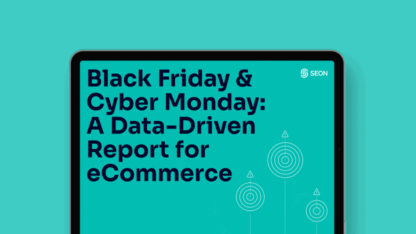In recent years, fraud and anti-money laundering (AML) have ceased to be entirely separate domains. As payments continue to go digital and the methods of financial crime become more complex, criminal actors are now routinely layering fraud scams with identity deception (such as deepfakes and synthetic identity fraud) before laundering transactions in a single continuum, exploiting the seams between disconnected risk domains.
Today, many payment providers maintain different teams, tools and workflows, making fraud and AML convergence in payments an urgent priority. The resultant separation of these functions yields slower decision-making and creates gaps at handoffs that limit visibility across the customer lifecycle. Forward-looking companies are collapsing these silos, however, unifying fraud and AML operations to speed decisions, reduce manual reviews and surface richer risk insights. This convergence is rapidly becoming a competitive necessity, especially for scaling payment providers, and is responsible for driving significant change.
Operational Costs of Siloed Fraud & AML in Payments
Fraud and AML teams historically emerged from different motivations. Fraud teams focus on stopping direct theft, chargebacks, identity abuses and account takeovers (ATO). AML teams are tasked with detecting money laundering, structuring, sanctions violations and predicate offenses. These functions evolved with separate data sources, risk thresholds and investigative priorities, a legacy that introduces friction, especially when a single customer triggers both fraud and suspicious transaction patterns.
This divided approach is accompanied by a steep operational cost. Companies often maintain duplicate technology stacks, redundant workflows and parallel rule sets, with major institutions increasing compliance headcount dramatically to compensate for gaps in legacy, rules-based frameworks, gaps that persistently lead to high false positive rates. And the burden is not only financial. Fragmented processes create slower investigations and inconsistent risk judgments. A suspicious transaction flagged as fraud might never reach AML or compliance reviews in time, allowing ill-gotten funds to disappear. Unification reduces these handoff delays and surface signals that would otherwise be missed.
The case for convergence is both economic and strategic, yet despite its logic, convergence is not simple. The most obvious obstacle is technology. Fraud platforms typically focus on real-time fraud, while legacy AML systems often analyze patterns in batch processes over longer periods. Blending these approaches requires a modern, unified data foundation that supports both streaming and batch analytics, without sacrificing speed or oversight.
Payment Onboarding Fraud & AML Screening
Onboarding is often where fraud and AML separation cause the most waste. Fraud teams may identify risky signals late in the process, only after customers have advanced into compliance-driven KYC checks. This means providers spend heavily to verify applicants who should have been filtered out earlier. Conversely, AML reviews may overlook early-stage fraud markers, like disposable email addresses or suspicious device behavior, that suggest an applicant is illegitimate.
A converged approach screens fraud and AML signals together at the point of entry. Device intelligence, behavioral biometrics and sanctions screening combine into a single view, ensuring that high-risk identities are stopped before they incur compliance costs. Legitimate applicants are approved faster, with fewer redundant checks, reducing both operational expense and customer friction. For high-growth payment providers, this represents a direct gain: lower onboarding costs, faster conversion and improved trust in the first customer interaction.
Transaction Monitoring Without Silos
Fraud and AML divergence is even more visible in transaction monitoring. Fraud teams often focus on real-time detection of anomalies, such as unusual transaction amounts, velocity spikes or inconsistent device activity. AML teams examine patterns across days, weeks or months, looking for structuring, layering or other suspicious behaviors. When these processes run in parallel but disconnected, signals get diluted or delayed.
Convergence solves that problem by applying shared analytics to the same data stream. Transactions are evaluated simultaneously for fraud and AML indicators, allowing investigators to see links between immediate anomalies and longer-term laundering patterns. Instead of a sequential handoff — fraud first, AML later — the system delivers an integrated alert that reduces noise and accelerates interdiction. This prevents criminal networks from exploiting timing gaps and reduces the likelihood that funds vanish before review.
Overcoming Organizational Inertia
Resistance to convergence often begins with the legacy of staff specialization and entrenched operational practices. Many professionals have built careers becoming experts in either fraud detection or AML compliance, developing distinct investigative instincts and risk appetites. Bringing these skillsets into alignment demands not just adjustments in workflow, but a cultural willingness to learn from “the other side of the house.” Embedding interdisciplinary training and encouraging rotation between teams can help foster a shared mindset that is critical for success.
At an executive level, realignment means surfacing and addressing the invisible boundaries that block progress. Change management efforts succeed when they identify and systematically remove institutional bottlenecks, such as inconsistent case review protocols or fragmented incident escalation channels. Regular joint reviews of complex cases, for instance, can bring together a wider array of perspectives and can reveal root causes that would escape notice in isolated teams.
Leadership also plays a pivotal role in translating convergence into daily practice. This goes beyond supportive statements: incentivizing joint problem-solving, investing in unified platforms and publicly recognizing team successes establishes that the institution values holistic risk management. Over time, such visible commitment from leadership builds the trust required to make collaboration second nature, not a forced initiative.
Compliance Workflow Gains
Unifying fraud and AML processes also pays dividends in compliance operations. Filing suspicious activity reports (SARs) often requires pulling evidence from multiple systems and reconstructing fragmented case histories. With a converged platform, investigators access a single case file containing fraud triggers, AML alerts, transaction records and supporting documentation. The result is faster report preparation, fewer errors and stronger audit trails.
Regulators increasingly expect explainability in risk decisions. Converged operations provide clearer rationales because all contributing signals are visible in one system. This transparency supports regulator trust and reduces the likelihood of penalties for process deficiencies. It also gives compliance teams more time to focus on higher-value investigations rather than managing paperwork.
How High-Growth Payments Providers Converge Fraud & AML
High-growth payment providers are leading the way in fraud and AML convergence by implementing unified technology stacks and advanced data integration strategies. These organizations have moved beyond siloed legacy teams, opting for shared data layers that serve as a single source of truth for both fraud detection and AML monitoring. This architecture not only minimizes operational duplication but also enables real-time sharing of transactional, behavioral, and identity signals across all risk teams, ensuring that alerts are context-rich and actionable.
A cornerstone of this transformation is the deployment of advanced explainable AI models that can analyze complex patterns across fraud and financial crime scenarios simultaneously. Rather than separating workflows by type of risk, AI-driven systems interpret signals holistically, learning to spot emerging risks that blur the lines between fraudulent and money-laundering activities. For example, machine learning can sift through vast data sets to identify anomalies, while behavioral biometrics and network analytics draw connections between previously unlinked cases, allowing faster and more accurate interdiction.
By standardizing investigator workflows and combining case management functions, these companies have reported significant reductions in investigation time, improvements in false positive rates, and measurable gains in operational efficiency.
Fraud & AML Convergence: The Future of Payment Risk
Criminal networks exploit the space between fraud and AML functions, and institutions that maintain silos risk falling behind. By unifying fraud prevention and compliance, payment providers gain the speed, visibility and confidence required to stop threats earlier and reduce operational strain. The organizations already embracing convergence are proving that it delivers more than efficiency. As the digital payments landscape grows more complex, the ability to act as one risk team will define which companies stay resilient and which get left exposed.









